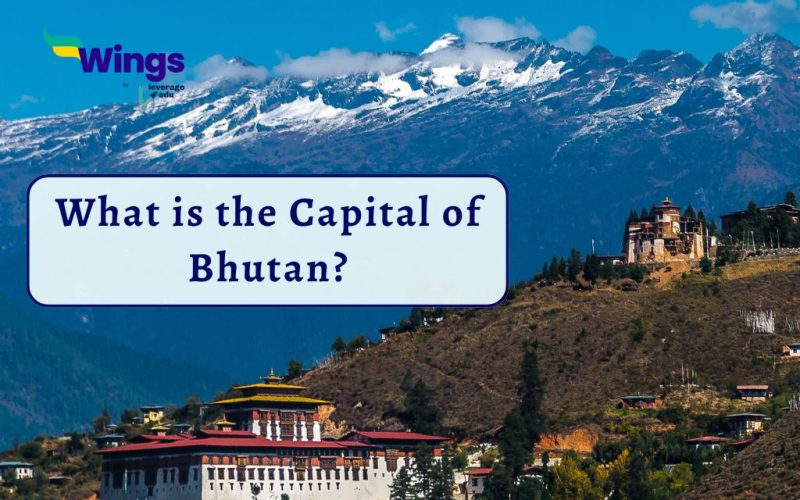The Capital of Bhutan is Thimphu. If true peace were to ever exist, it would be here in Bhutan. From its people to its scenery, everything is mesmerizing. With the times and the challenges, this ancient place has turned into a modern yet ancient wonder. Thimpu is a cultural and political hub of all activities that take place in Bhutan. Read on to learn more in detail about the Capital of Bhutan, Thimphu.
Table of Contents [show]
What is the History of Thimpu?
The History of Thimphu dates back centuries to when it became a small farming valley in the 13th century. However, it became well known during the 20th century when it was established as the Capital of Bhutan.
- The city grew in the 1920s under the reign of King Jigme Dorji Wangchuck.
- King Jigme Dorji Wangchuck started reforms which included the decision to shift the ancient capital from Punakha to Thimphu in the year 1955.
- Moreover, in 1962 when a permanent dzong which is a fortress-monastery was made it hence made sure of Thimphu’s position as the political center of Bhutan.
Did you know?
]The Dzongkha name of the country of Bhutan is Druk Yu which means the Land of the Thunder Dragon.
Demography, Geography and Economy of Thimpu
As of 2024, Thimphu’s population is around 144,197 people. Bhutan has the most amount of people in this area thus making it a trade hub.
- Most of the people are Bhutanese with the ethnic group of the Tsangla being the most. However, you will also find people from the Nepalese community present in Thimphu.
- The male-to-female ratio is balanced as well as the literacy rate is also high as Bhutan has a strong focus towards education.
- Thimphu is in the Wang Chu Valley in western Bhutan, at an elevation of around 2,332 meters or 7,651 feet above sea level with the Himalayas surrounding it.
- Thimphu has a subalpine climate.
- Summers are from June to August and are mild and pleasant, with temperatures reaching around 20°C.
- Winters from December to February are biting cold, with temperatures dipping below freezing.
- Rainfall is said to be moderate throughout the year.
Did you know?
By altitude, Thimphu is the 6th Highest Capital in the World.
- Interestingly, Bhutan makes it known to all that rather than focusing on the national GDP it focuses on the national GNH which is the Gross National Happiness Index. This focuses on sustainability and cultural preservation. So it is not that known how much their GDP actually is!
- However, in the past years, tourism has boomed in Thimphu and their world of Handicrafts has opened up to the entire world.
Also Read – What Is The Capital Of Nepal?
Culture of Thimpu
When culture and traditions go beyond the centuries, it is inevitable that would still reflect in today’s day and age.
- The Tashichho Dzong which is a seat of government as well as a monastic body is wonderful to look at. There are other dzongs and monasteries, like Simtokha Dzong which are spiritual sanctuaries.
- The Thimphu Tshechu is a festival with masked dances and colourful costumes. Moreover, you can also have a look at religious ceremonies and traditional performances.
- Bhutanese textile arts especially weaving, are a source of national pride. There will be skilled people making intricate tapestries and garments using traditional techniques right in front of you.
- There is a growing art scene in Thimphu, with galleries showing contemporary Bhutanese art alongside traditional paintings.
- Furthermore, there is traditional Bhutanese music with instruments like the dranyen which is the lute and the lingm which is a flute.
Also Read: What is the Capital of Andaman and Nicobar Islands?
It is ingrained into Bhutan’s culture this unique philosophy of Gross National Happiness (GNH). Here they prioritise well-being over material wealth. Additionally, sustainability, environmental preservation, and community spirit are of great importance to the people.
Facts about Thimpu
Thimphu has the opportunity to be known as a capital city with no traffic lights at all! Traffic is managed by polite traffic police hence adding to the charm of the nation. Here are some more facts about Thimphu:
- Bhutan has a national dress code which makes citizens wear their traditional attire in public spaces. However, this is not that strictly implemented in Thimphu as compared to more rural areas. You will nonetheless notice locals in their Gho for men and Kira for women.
- Rather than Sundays, Fridays and Saturdays are weekends in Bhutan. You will find government offices and some shops closed which is a glimpse into the importance of leisure and community life.
- Bhutan is a global leader in sustainability initiatives. Thimphu has electric cars and car-free zones!
FAQs
The real capital of Bhutan is Thimphu.
There are no two capitals of Bhutan. However, Punakha used to be the ancient capital of Bhutan but the capital was changed to Thimphu in 1955.
The capital of Bhutan is Thimphu and the currency is Bhutanese Ngultrum.
Relevant Blogs
That is all about what is the capital of Bhutan! If you want to know more about topics like this, then visit our general knowledge page!
 One app for all your study abroad needs
One app for all your study abroad needs















 45,000+ students trusted us with their dreams. Take the first step today!
45,000+ students trusted us with their dreams. Take the first step today!
